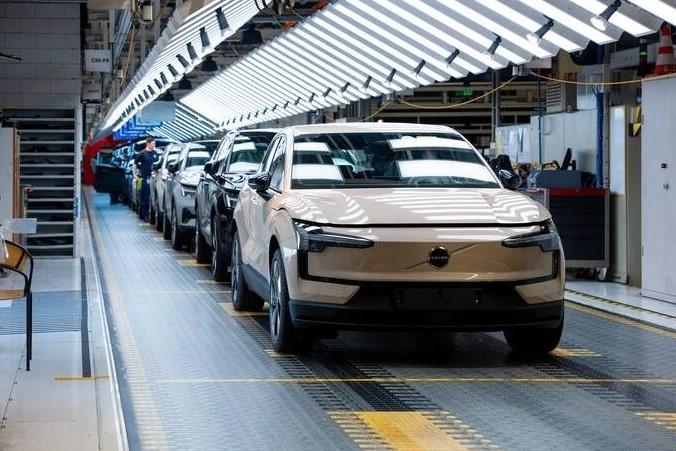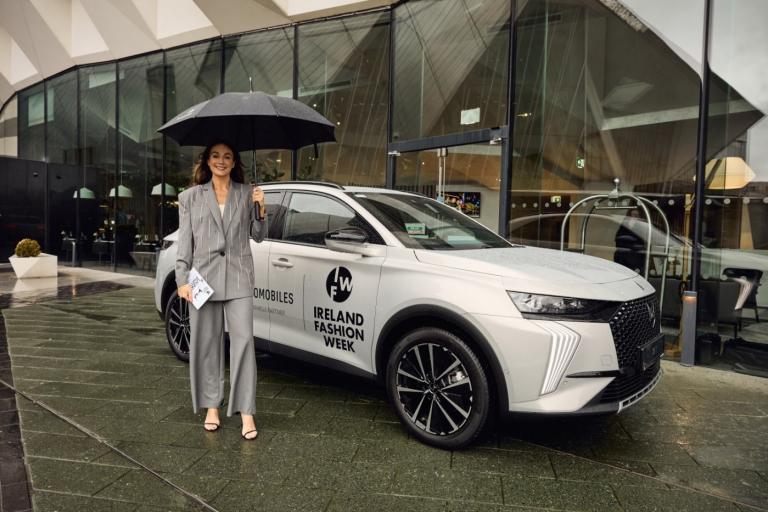In the erotic studio, and as naked as the car is Born
Published on 17 October, 2021
Overview
It would be fair to say that, during a long and interesting life, I’ve ended the night in some very strange places. However it‘s rare enough that I would start the night in a house like Studio Sitges, along the coast from Barcelona on Spain’s north eastern coast.
We had walked a few minutes from our hotel on the Sitges promenade, before entering the garden of this ultra-modern house set among much more ancient villas.
After a welcome drink beside a long swimming pool, we were ushered down steep concrete steps into a double-height bunker with lifts, gantries, many bright spotlights, and some ultra-trendy furnishings.
Here we had dinner, or rather a long list of tapas, and brought to an end our day of driving the new all-electric Cupra Born.
It had seen us navigating the hills overlooking Barcelona and (less pleasantly) the awful traffic of the Catalonian city, before a press conference at Casa Seat, the carmaker’s very new and smart urban HQ.
It had been a good day – but over our evening tapas we could only wonder in what sort of place we were. And then it all suddenly made sense. Lots of lights, many places to pose... we were in a photographer’s massive den.
But this was no normal studio and, perhaps unfortunately, the owner and his usual subjects were away. For this was the working home of Petter Hegre, the 52-year-old Norwegian – who is one of the top erotic photographers in the world.
There are many very expensive ‘art’ books displaying Petter’s talents and his subjects’ beauty.
I couldn’t be sure if Cupra was trying to make a point by having the dinner in such a place – but since it was launched three years ago by Seat as a stand-alone marque, the company likes to see itself as an “unconventional challenger brand”.
And certainly cars like the Formentor, which I tested earlier this year, have a real style about them, getting heads turning and pulses racing.
The Spanish-designed Born, Cupra’s first 100pc EV, is based on the same platform as the hugely successful all-electric Volkswagen ID.3 – and it’s built in Germany alongside the VW.
But the Spanish have had the time and style to make something both more eye-catching and pleasant to drive, with a real intent to be a premium choice.
It definitely looks good – lovely creases, copper badging, detailing and absolutely captivating lighting set-ups, especially the rear which has a stunning ‘coast-to-coast’ LED running across the full width.
There are three battery options, with ranges between 350km and 540km, and three powertrains between 110kW and 170kW (the latter can have an e-boost pack, which can take the car from 0-100km/h in 6.6 seconds).
All the cars are rear-wheel drive, have big alloys, possess a low centre of gravity and are exceptionally agile – which was just as well, as the roads above Barcelona were very bendy, with large threatening cliffs.
The Born is competently sporty without being over exciting. Boot space in the five-door hatchback is good, but the rear is tight enough when you have a beast like me up front.
There’s lots of safety equipment on board, as well as a few touches to enhance environmental credentials – like the standard front bucket seats, door panels and armrest, all made from recycled materials.
For about 80pc of the time, the Born feels and acts like a premium car – but it isn’t the full shilling. Looking around the cabin there is just an occasional touch of cheapness inherited from VW central casting.
And of course, like all EVs, the Born isn’t cheap. Prices will start at just under €39,000 excluding grants and delivery charges. However the options will soon have you heading towards €50k. That’s a lot for what is after all a small car, however tastefully packaged.
Like most EVs, it is €10k too much. You can see some of the joins from the ID.3 – but the looks are appealing enough. Unlike me, who would never make it as one of Hegre’s models.
The Kia EV6
If the Cupra Born is in many ways a derivative of an already well-established EV, the Kia EV6 is something totally different and demonstrates how the Korean company is determined to move from being a fast-follower to having the credentials as a game-changer.
It is an absolute stunner of big proportions, and it was worth returning to Spain last week to test it around Malaga and Marbella for a day and have a talk with the designers.
Of course it is a fully electric sister-car to the Hyundai Ioniq 5 – which is also massively impressive – but the EV6 has a more sporty profile and really changes the way Kia will be thought of.
There is an awful lot of space inside. Think the Skoda Superb and then some. However the luggage area is less impressive. Yet the safety technology on board, and the whole 'design directory’ does give you a feel of having arrived in the future.
There’s a range of at least 500km with a heat pump on board to make that range always realisable and give very fast charging. It is the first Kia to take the company’s brand new logo.
You could see that the Kia designers, who attended the event along with Kia’s Ireland boss Ronan Flood, were very excited. As one executive said, “Too many EVs have much the same look and feel. We asked for a car that was chocolate flavoured rather than vanilla.”
Apparently the legendary Lancia Stratos rally car of the 1970s was an influence. The EV6 is being launched to Kia dealers this weekend and then shown to the wider motoring press in 10 days when I will report more.
It won’t be cheap. About €60,000 before getting the €5,000 grant that was kept in the Budget. But expect to see an awful lot of them around, even as executive cars for people who want green credentials.
The Budget burn
Just a note on the Budget: it was good that the EV grant was kept, but there are a lot of people gaming the system. The rise in diesel has been long flagged, and unfortunately is the way the country must go. The VRT rise will be relatively minimal on smaller, cleaner cars.
The Touaregs and others can look after themselves.
Latest Reviews

Volvo Cars starts production of EX30 in Europe

Dacia Spring: Ireland’s Best Value EV Just Got Even Cheaper

DS Automobiles Named Official Vehicle Partner for Ireland Fashion Week